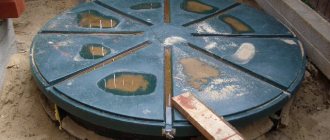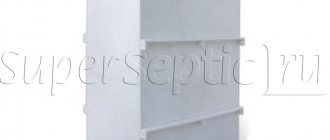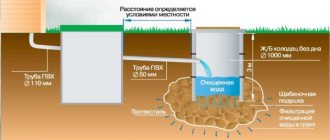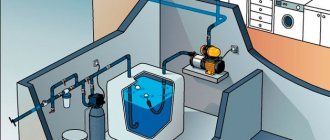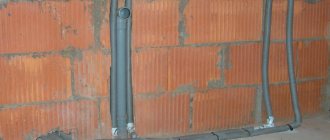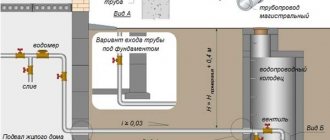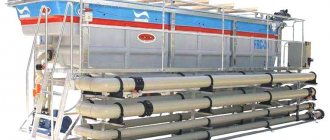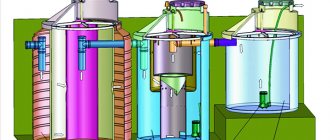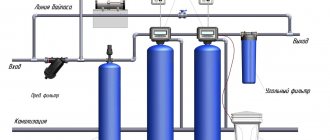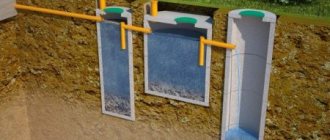One of the main resources on our planet is ordinary drinking water, the lack of which can doom entire nations and countries, putting them on the brink of physical survival. But, even if not everything is so scary and terrible, the liquid that comes into our home is most often considered drinkable, so a variety of water purification filters have already firmly established themselves in houses and apartments, as well as offices, gyms, hospitals, schools and other facilities as an ordinary and indispensable household appliance.
However, in order to get drinking water that is truly safe for health and has a pleasant taste, it is not enough to simply buy a unit for its purification. The choice of the latter should be determined by the initial chemical characteristics of the compositions, as well as the volume of consumption, the complexity of operation, the cost of both the apparatus itself and the reagents or other consumables necessary for its maintenance, etc.
In addition, it must be taken into account that in many cases it is necessary to purify not only water for drinking and cooking, but also that which is used for household needs: bathing, washing dishes, and laundry.
Therefore, depending on the task at hand, you should choose a filter, which can be either a small, cute device in the form of a jug on the kitchen table, or a rather impressive installation, the installation of which will require a separate “living space” in a country house. But first things first.
How to choose the right water filters for a private house and apartment?
The source of water supply for a private home, especially if it is located outside the city, is most often a well, a well, or even an open reservoir. Water is usually supplied to apartments centrally, and, unlike an autonomous supply, it is already prepared, that is, it has undergone preliminary purification with disinfection, the degree of which can vary, as it depends on many factors:
- initial state of water;
- the effectiveness of the cleaning technologies used;
- condition of water supply networks and other factors.
In this case, when choosing a filter for an apartment, the determining criterion is the ability of the installation to bring the condition of the water to the level that satisfies the consumer.
In a private house, the owner himself is engaged in water treatment, which must be carried out if the water source is a deep artesian well, and the choice of a treatment plant will depend on the initial quality of the water, in which the following can be recorded:
- increased content of certain types of salts;
- impurities of heavy metals (in addition to relatively harmless iron, lead ions and other chemical compounds can also be detected);
- the presence of an unpleasant odor associated with a high content of hydrogen sulfide, or contamination of the liquid with organic matter;
- ingress of particles of sand, clay, etc.
In addition, nitrates, pesticides and other chemical compounds, petroleum products and even surfactants contained in washing and detergents can get into the water source.
Therefore, before choosing and installing a filter, a mandatory water analysis will be required. Based on the results of the study, a decision should be made on the choice of a treatment plant.
But, as practice shows, deferrization of water from a well is a necessary stage of purification, since the content of this element is quite high even when life-giving moisture is extracted from very great depths.
It is also important to take into account the volume and nature of water consumption: in a country house with a permanent residence regime, naturally, this issue will need to be given due attention and an effective cleaning system will need to be chosen, and for a summer house it is quite possible to limit yourself to even a filter jug that can meet the needs for drinking water.
Do-it-yourself installation of an aeration station (VS) - photo
a) Preparation of the pit, subsystem b, c) The installation body is placed in the pit, d, e) Insertion of underwater and outlet lines into the body of the treatment plant f, g) Installation of electrical equipment, filling the installation with water and sprinkling with sand, h) External part of the aeration station
Autonomous sewerage system for a private house (VOC). Septic tank or deep biotreatment station, what to choose?
Types of filters for water purification
In a country house or apartment, water purification can be done using various filters, which can be classified according to several criteria, but first you should take into account that all filters are divided into two large groups:
- accumulative;
- flow-through.
In addition, they are classified by:
- cleaning technologies: mechanical, ion exchange, aeration, reagent, reverse osmosis, etc.;
- degree of purification, which can be high, medium or minimal;
- design features: filters are cartridge type, pour type and others;
- installation location.
Cumulative water purifiers are represented by filter jugs and dispensing units. The first are a device consisting of a water container and a cartridge installed in it, which can be universal or have a special purpose, for example, equipped with the function of softening or deferrizing water.
Fundamentally, dispensers differ from filter jugs in size and the presence of two chambers: the first is intended for pouring water, and the second receives liquid after passing through a special filter system. For convenience, they can be equipped with drain taps.
Flow cleaning installations are very diverse and are represented by:
- one- or two-stage faucet attachments, the main function of which is to remove iron and neutralize chlorine in water. They are most in demand in city apartments with centralized water supply;
- filters installed “under the sink”. They are highly efficient and are often used not only in city apartments, but also in country houses. The purification technology used in these installations can be very different, but reverse osmosis devices are most in demand;
- Main filters are the most common type of cleaning devices; the installation location is most often the supply pipe, but they can also be installed individually to serve one water point. They are distinguished by a wide variety of products both in appearance and in the principle of operation and degree of purification.
Lime
Lime is formed by calcium and magnesium salts, the presence of which makes water hard. The presence of these impurities can be judged by a white coating that is difficult to remove from dishes and plumbing fixtures, which quickly damages faucets and household appliances.
Lime in water.
Filtering units cannot guarantee complete purification of liquid from calcium and magnesium impurities, but they reduce the content of such impurities to a normal level of 0.3 microns, which is safe for both humans and the electrical appliances they use that come into contact with water.
Water purification system for a country house and apartment: features and differences
For a country house, it is important not only to ensure an uninterrupted supply of water from a well, well or other source, but also to guarantee it the necessary cleaning.
The established opinion that water from a well, especially artesian water, is suitable for use as drinking water, does not correspond to the truth, since even with relatively biological purity, its chemical composition does not always allow its use without preliminary water treatment.
For example, purifying water from iron from a well is practically a standard situation, since the content of this metal in water raised from the deepest sources is quite high.
As a rule, the water treatment system in country houses (with the exception of summer cottages with temporary residence in the summer) is multi-stage and consists of several types of installations, the choice of which is determined by the analysis of the initial state of the water, as well as the volume of consumption in the house.
Another feature of water treatment in a country house is its stationary nature: as a rule, utility rooms are used for this, in which, in addition, the air temperature is maintained above 0 °C, which guarantees uninterrupted operation of the system all year round.
An approximate diagram of a purification plant in a country house may look like this:
- At the entrance to the house water supply system, coarse filters are installed, which allow you to get rid of various mechanical impurities, most often clay and sand;
- the next step is an aeration unit, with which you can get rid of hydrogen sulfide, as well as some organic compounds. In addition, at this stage, an active process of iron oxidation occurs;
- at the next stage, the process of deferrization of water from a well or borehole occurs, as well as the process of eliminating impurities of other metals and chemical compounds;
- then you can use softeners, the main function of which is to reduce the content of calcium and manganese ions in the water;
- the last stage is the use of additional filter elements, in which a carbon filter or ultraviolet disinfection technology can be used to purify water. In addition, ozonation of water is often carried out at this stage.
As a rule, the water purification system in a country house, despite the complexity and cumbersome design, operates autonomously, and its maintenance comes down to timely replacement of the appropriate cartridges, reagents or special backfills and other filter elements.
Features of a water purification system in a city apartment
The supply in city apartments, as a rule, is of a centralized type, and, therefore, the water flowing from the tap has already undergone the necessary preparation and purification, but, as practice shows, its quality does not always meet the requirements of consumers, in addition, it may simply not meet even sanitary standards. Therefore, the use of filters is becoming the norm.
When choosing a purification plant for an apartment, it is also important to take into account the chemical composition of the water - depending on this, filters are selected, the number of which may vary. The most commonly used products are main-line type, which may be sufficient for process water used for washing, bathing, etc.
Drinking water, in order for it to live up to its name, must be purified more thoroughly, especially since the industry offers a large number of filtering devices for this, one of the important differences of which is their compactness.
Therefore, finding a place to install them is not a problem even in a small kitchen as the place most often used for their installation.
How to install a main filter? Video:
Methods of water purification used in apartments and cottages
Since increased demands are placed on the quality of drinking water, many apartment owners choose compact “under-the-sink” devices or filter jugs. The first belong to flow-through installations and have sufficient productivity to satisfy the need for clean water, safe for both drinking and cooking.
The capacity of jugs is limited by their size and is more in demand when water consumption is low, for example, in a country house.
In this case, they do an excellent job, for example, of purifying water from a nearby well or other source.
“Under-sink” devices, in addition to providing a high degree of cleaning, are compact in size and, depending on the manufacturer and configuration, may have a tap for a drinking water filter , which is installed next to the main one.
According to the principle of operation, these installations are flow-through, but they can use different methods and technologies for water purification:
- multi-stage filtration system;
- reverse osmosis.
Filters with multi-stage filtration consist of several modules, each of which carries out a specific cleaning stage. Special cartridges with different functional purposes are used as filter elements:
- to remove mechanical impurities;
- deferrization and water softening;
- removal of chlorine and organic compounds, etc.
To improve the taste of drinking water, silver ions or carbon filters can be used.
These filter units are quite effective, but only if the cartridges are regularly replaced, the frequency of which is determined by the volume of water consumption.
Features and advantages of using reverse osmosis filters
Reverse osmosis installations also consist of modules, the number of which reaches 4 elements. The premium segment of these installations is represented by the best reverse osmosis filters , the number of modules in which has been increased to five.
In each container with a cartridge installed inside, a certain stage of cleaning occurs, and a mandatory element of such installations is the presence of a module with a membrane that provides ultra-fine filtration, and a mineralizer.
The functions of the latter are determined by the fact that the water obtained in this way is, in fact, distilled, therefore, in order to be converted into drinking water, it must be saturated with the necessary mineral elements.
But since the cleaning process in such installations takes a certain time, to ensure an uninterrupted supply of clean water, they are equipped with small tanks whose capacity does not exceed 10 liters.
Before determining which is best to use a water filter for washing, you need to pay attention to an important feature of operating reverse osmosis units.
In order for water molecules to pass through the membrane, it is necessary to ensure a pressure in the system of at least 3-5 atm.
Therefore, in some cases it is necessary to use a pump, which may be included in the basic equipment. Ultraviolet irradiators can also be used as an additional cleaning element.
Despite the fact that installing a reverse osmosis filter is more expensive for the consumer, the operation of such devices is more economical, since the cost of one liter of clean water is much lower, for example, in comparison with the use of cartridge products.
Disadvantages of homemade devices
A self-made filter copes with the task quite effectively. In addition, the cost of its production will be small.
However, such designs have their disadvantages:
- small resource of filter elements;
- there is no possibility of self-cleaning;
- labor-intensive manufacturing process;
- fragility.
The most serious problem with homemade filters is their inability to absorb microorganisms dangerous to human health. Water purified in this way must be boiled before use.
Mainline water filters: operating features and advantages
This type of water filter is actually a mandatory element of the plumbing system of an apartment or private house, and the main place for their installation is the supply pipe. Most often they are installed to remove mechanical impurities in water (sand, clay), but they can also serve as an effective filter for iron compounds and other chemical elements.
When choosing such devices, in addition to their operating principle, you should also take into account their throughput, which must correspond to the water consumption in the house.
Main filters can provide:
- rough purification of water by removing insoluble mechanical particles from it, the entry of which into plumbing fixtures significantly reduces their service life;
- fine cleaning is provided by devices that use sodium polyphosphate for their work. The use of such filters is allowed only in tandem, for example, with a washing machine. They soften water, which at the same time becomes undrinkable, but can protect the working elements of household appliances from scale.
A universal flow filter for mainline water is a device with granular loading, for which special reagents are used. Such a device is capable of effectively purifying water, removing from it not only mechanical impurities, but also various salts, chemical compounds and chlorine.
Thus, the use of main filters ensures:
- better taste and chemical characteristics of water;
- helps to increase the service life of household appliances.
The undeniable advantages of this type of filters are their affordable price and ease of maintenance.
In addition, a large selection allows you to choose a device taking into account the chemical composition of the water, and you should also pay attention to the fact that in addition to installing them on the cold water supply pipe, they can also be used for hot water supply: for this you need to purchase a filter that has the appropriate marking.
Types of main filters: features of operation and operation
A cartridge or a special mesh can be used as a filter element. Often, replaceable cartridge elements use a carbon water filter , which perfectly absorbs chemical and mechanical impurities. This option allows for fine cleaning, including hot water.
Mesh filters are represented by three types of brass products (by type of mesh): wire, fiber and powder. They are capable of trapping exceptionally large insoluble particles and are only effective with regular maintenance.
Particularly popular are self-flushing type main filters; filters are cleaned of contaminants in an automatic mode.
These devices also include filters:
- equipped with ion-exchange type cartridges, guaranteeing a high degree of purification and water softening;
- magnetic filters, the operating principle of which is based on the ability of rare earth elements to improve the composition of water by attracting iron compounds, various salts, etc.;
- For water treatment, you can also use mainline reverse osmosis filters, the operating principle of which is based on the use of membrane-type cartridges capable of passing only water molecules. But it is worth considering the peculiarity of using such filters, which require a storage tank for contaminants and a connection to the sewer system, into which what was not passed through the membrane is discharged, that is, insoluble particles, salts and other chemical compounds.
Fibos brand products , which can operate without changing cartridges for 10 years or more, depending on the volume of water consumption and the initial water quality.
Their feature is the presence of an external flask in which all contaminants accumulate, while the filter element itself remains clean.
Main water filters. Video:
Tips for choosing
Any cleaning method is characterized by step-by-step filtration. In everyday life, the physical method of purification is more often used: filtration through a grate followed by sedimentation of debris. The choice of a device for hard water in the house is carried out by using physical and chemical methods.
For cleaning, mechanical filters are used that trap large particles, rust, and clay. Sedimentary or mechanical methods increase efficiency, extend the service life of the system, preventing its rapid contamination. Types of mechanical devices:
- Mesh. The body is equipped with a fine-mesh replaceable mesh.
- Multilayer or cartridge. The design includes several protective layers that effectively retain sand and expanded clay.
Softener filters require replacement of the material when they become dirty or when the volume of the filler decreases due to removal. The device is presented in the form of an ion exchange block filled with artificial resin granules. It enters into a substitution reaction, promoting the formation of sodium ions.
After the resource is exhausted, the ability to metabolize is lost, regeneration is carried out in order to restore the functionality of the filter. The choice of filter depends on the results of the water test. If there is an excess of iron, an optimal deferrization scheme is developed:
- Reagent. Potassium permanganate is added to the water. Reacting with iron, a precipitate is formed. It is stopped by the filter.
- Reagent-free. The technique is based on the oxidation of iron. Maximum contact with the oxidizing agent contained in the air is ensured by spraying the liquid and its aeration.
